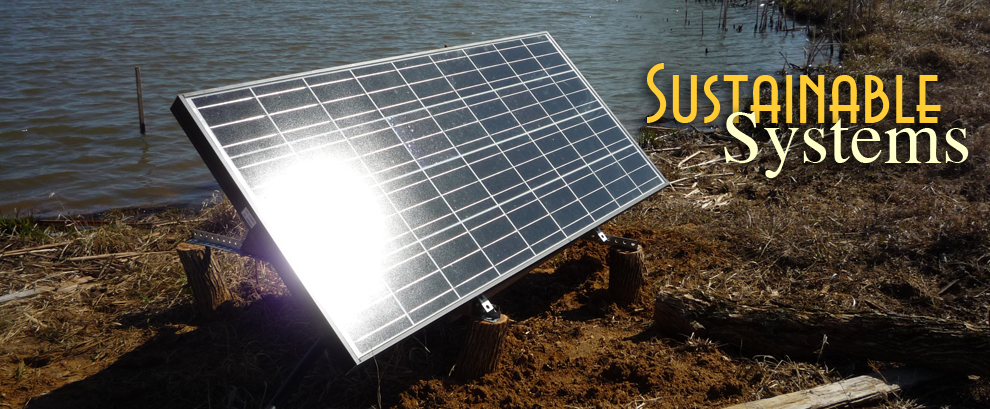Sustainable Living Skills You Need to Survive
It might not seem so serious to the average consumer in the First World, but the future of the world as we know hangs in the balance. The media is full of bad news that can make changing things for the better seem hopeless, but there are simple and radical things you can do to reduce your impact and set an example for others. It's not just a choice, our survival depends on it.
Follow my YouTube Channel Hardcore Sustainable to find out how I've implemented sustainable technologies and techniques at Dancing Rabbit Ecovillage to help me live more lightly on the Earth.
Subscribe to my email list to receive updates of my latest sustainable living videos

I Made a Delicious Snack From My Sour Cherry Harvest
Obviously key to any permaculture system is picking varieties of plants that are productive, and the sour cherry performs really well in our area. My pie cherry tree, a Montmorency, produced abundantly this season. The fruit is kind of tart to eat out of hand, though some don’t mind. I like to dehydrate the fruit so they can be stored for longer. They can be sweetened for an easy snack, trail food, or ingredient in salads. There’s nothing better than local fruit, and these cherries a loaded with flavor.
https://www.facebook.com/HardcoreSustainable/
Politicians Want To Make It Illegal For You To Produce Your Own Solar Power
Being able to produce our own sustainable power, and also be connected to the grid is a big part of our sustainable systems at Dancing Rabbit Ecovillage. But right now our ability to connect to the grid for the reasons we want to is being threatened by Republican lawmakers on the take from…you guessed it…the fossil fuel industry and corporate utilities. But that’s not all Republicans around the country are trying to push to stop people from being more self sufficient and sustainable.
State and local governments, pressured by utilities and led by Republican lawmakers, want to outlaw living off the grid. Local codes around the country don’t allow living off the grid, yet they require you to be connected to often outdated, ancient systems using outmoded technology. If you are connected to a sewage system you are guaranteed to mix your shit with your water supply, and many grid sewage treatment systems can’t handle increased flow in rainy weather and flush raw sewage into waterways. Is that really a better, more sanitary system?
Something I didn’t mention about our power to take power from fossil fuel industries is that when we stop using fossil fuel we drive down the price of it and it becomes less economically viable for corporations to invest in extraction. This is why new investment in fracking has slowed with the dip in oil prices. If it’s not a big enough payoff corporations won’t invest in extraction.
Around the world, countries other than the US are eliminating fossil fuel from their economy. Britain has cut its coal consumption 50% since 2010. Other European countries are already fossil fuel free. As this happens, the price of fossil fuel will plummet. But without government (qualifier: without govt uncorrupted by the fossil fuel industry) that would just mean everyone would go back to using more fossil fuel. Countries that have committed to phasing out fossil fuel with laws will not reinvest in fossil fuel just because the price goes down. We have to stop using fossil fuel in the US despite the idiocy of the current administration and the people who have stolen our government. Once we give them the boot, we have to change laws to phase out the use of fossil fuel country wide. This includes requiring private utilities (which get trillions in subsidies from the government) to allow grid tie with net metering, and making living off the grid legal everywhere in the country. Until all the utilities are selling nothing but renewable, sustainable energy, we have to be able to produce our own.
The Cheapest, Easiest Way to Produce Solar Power at Home
I’ve gotten some comments from people saying this is illegal in some places. This video is not meant to imply that you can just connect to the grid and feed back into it without an agreement with your local utility, it is just intended to show you one way you can easily grid tie and backfeed if you have an agreement or want to get one with your local utility to grid tie.
I thought I’d have to spend a lot of money, but it ended up being cheaper than ever to get my solar system feeding back into the grid.
It used to be that you had to invest a lot of money in a solar power system. Despite that solar panels eventually paid for themselves in energy cost savings, it was a really expensive initial investment. Then there were government tax credits for renewable energy that made solar systems much more affordable to the average American. This led to the increased production of solar panels and the driving down of prices. Now technological advance is bringing costs down even more, and the technical know how to set up a solar power system like this is simpler than ever.
If you are still using grid power from fossil fuel you are propping up people and corporations that are responsible for our current government and for the system we have that benefits corporate interests over the public interest. The best way to ensure that these people lose power is to stop giving them money by becoming energy independent. It’s never been easier or cheaper, so why aren’t you doing it?
Beautiful Finish Alis Coat on a Tiny House Pt 4
In this final installation of this natural building how-to series demonstrating an earthen plaster repair and alis application, we see the finished product of all our hard work. I finished it just in time for the new tenants to move into Wisteria Lodge.
The Stunning Results of My Clay Alis Natural Paint Pt 3
Continuing this natural building how-to series and my earthen plaster renewal and alis on Wisteria Lodge, in this video I show you the technique for applying the alis. The transformation of the ugly worn earthen plaster begins and we see what a difference the alis makes in the aesthetics of this tiny house.
I Made a Non-Toxic, Super Cheap Paint From Clay: Alis Part 2
In this video I continue my renewal of the earthen plaster in Wisteria Lodge, now mixing up the alis clay based paint. This process is so simple and the ingredients are so cheap, anyone could do it. And as you’ll see in the next video, the results are incredible.






